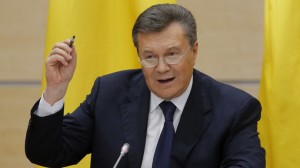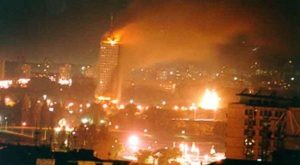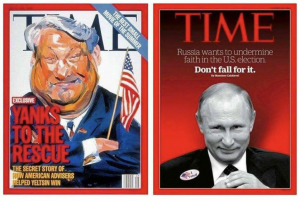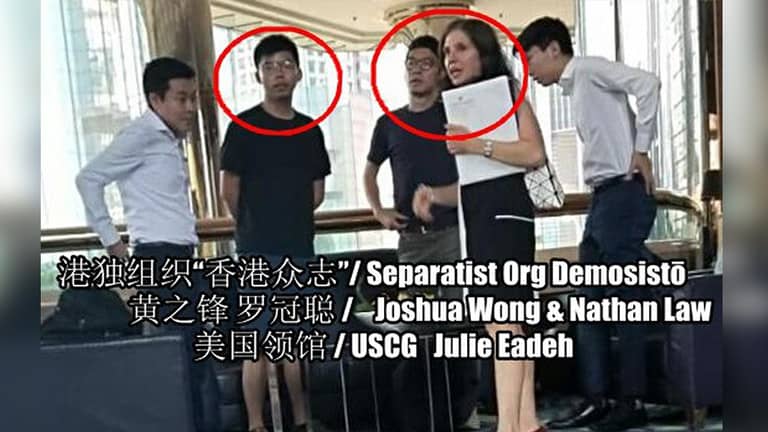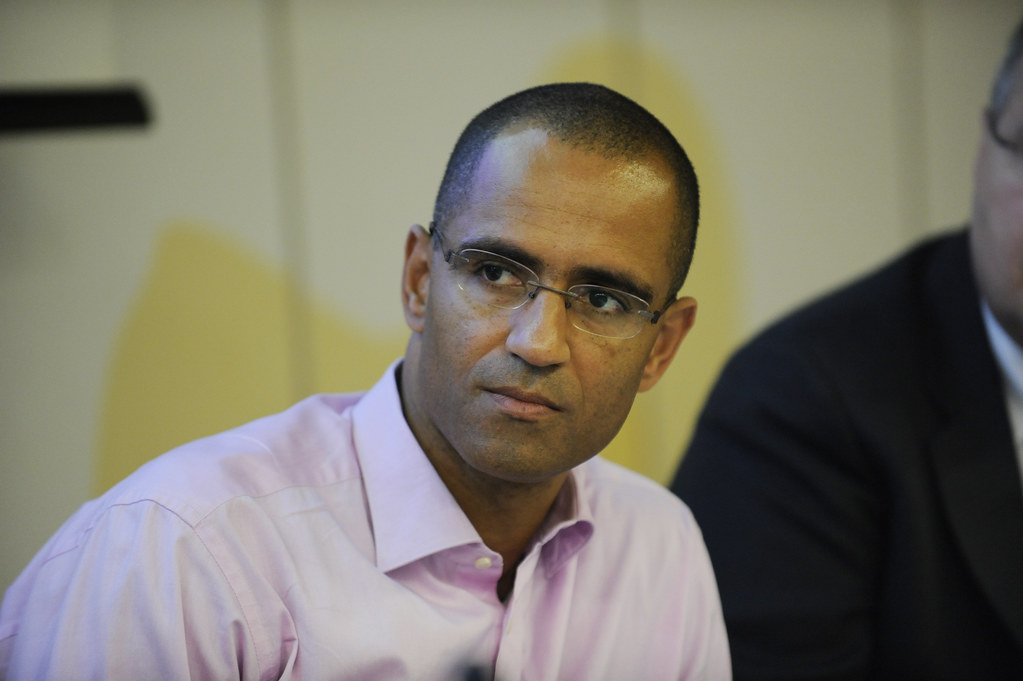Throughout history, the idea of those in power to oversee the education system started in the 16th Century. The history is complex and is rarely mentioned.
The formation of the American public education system began in the Kingdom of Prussia around 1525, a former Kingdom in north-central Germany with an extension of lands that crossed between the Baltic and Northern seas. It encompassed Belgium, the Netherlands, Luxemburg, France, and Switzerland to the south. It also touched upon the Russian border to the west and on the Austria-Hungary border to the east. During the time of the Titanic knights in the 13th Century, Christianity was established. The Teutonic Knights were a German militaristic-religious order based in Jerusalem, Palestine who had conquered the ‘Old Prussians’ and brought both German and Dutch settlers into their realm. Many ‘Old Prussians’ were killed, exiled or had to assimilate. In the beginning of the 14th Century, opposition to the Teutonic Knights gained momentum among the Prussians and overthrew the order with Polish and Lithuanian forces which led to the Thirteen Years War. It ended with the Prussians, Lithuanians and the Poles as the victors in the war leading to the ‘Second Peace of Thorn Agreement’ a peace treaty that was signed in 1466 between both sides. The Order agreed on the rights of the Polish Crown for Prussia’s western half called Royal Prussia in return the Knights accepted Eastern Prussia, later called Duchy of Prussia until 1525, as a territory under the Polish crown. Western Prussia was then administered under the Polish crown in accordance to the agreement.
Prussia became one of the most powerful states, although political conditions of that time became perplexed as those in power sought what can complement their special interests. Gordon A. Craig’s ‘The Politics of the Prussian Army 1640-1945′ said
“that they were maintained and that the disparate fragments of territory were forged, not only into a viable political union, but into one which was recognized as a Great European Power, was the result of two things: the political will and the sagacity of the Hohenzollern rulers after 1640 and the effectiveness of the Army which they created.” [1]
One of the last Grand Masters of the Teutonic Knights, Albert was a Lutheran who established Protestantism as he declared himself the first Duke of Prussia back in 1525. By 1569, Albert Frederick, the son of Albert became Duke of Prussia after he submitted himself or what would be called a “feudal homage” to the King of Poland named Zygmunt August which at the time, Ducal Prussia was a kingdom of Poland. By 1618, after the religious wars between the Protestants and Catholics throughout the Holy Roman Empire (a German Empire) utterly destroyed vast lands in the German territories and during the same time, the Vassal state of Poland was handed over to John Sigismund, a member of the Hohenzollern Dynasty. After Sigismund’s death, his son George William, Elector of Brandenberg was his successor, appointed in 1623 by the king of Poland, Sigismund III Vasa.
George William’s power to rule was rather weak so it was handed over to Catholic chancellor Count Adam von Schwarzenberg, a German official in his administration to manage the territory and then some time later, George William retired. His son, Frederick William, the Elector of Brandenberg, was known as the ‘Great Elector’ was the one who secured the Ducal Prussia’s independence of Poland, lead to the Peace of Oliva in 1660.
The Peace of Oliva, was the treaty that ended the Northern War of 1655 and lasted until 1660. It was signed by Austria, Brandenburg, Commonwealth of Poland-Lithuania and Sweden who also fought in the war. Frederick William of Brandenburg gained political power from the treaty and his rule over Ducal Prussia through prior treaties of Wehlau and Bromberg in 1657.
The centralization of the administration of the Duchy by Frederick William was monumental in securing power originally from the nobility and the oligarchy. According to Craig “Prussia’s standing army was born during the war of 1655-60” [2], Frederick William was responsible for building a military that was able to defend itself with aid from France. However, Frederick William’s policy of religious freedom for both Catholics and Protestants was a positive factor that contributed to the rebuilding of Prussian lands that was destroyed by previous wars over religion. Frederick William set the foundation for Brandenburg-Prussia to become a self-ruled Kingdom under his son and successor Frederick the 1st who established the Kingdom of Prussia in 1701 after he crowned himself as the ‘King in Prussia,’ as his ambition became evident as to his willingness to extend the kingdom with support promised to King Leopold the 1st of the Holy Roman Empire and Archduke of Austria in exchange for his title since war was looming between the Holy Roman Empire and France.
Frederick the 1st legacy was that he convinced the Holy Roman Empire to allow the Brandenberg-Prussian state to become a Kingdom. His son Frederick William I became his successor in 1713, so the devout protestant passed a law making education compulsory by 1717. Known as the ‘Soldier King’, Frederick William I believed in military values. He increased the size of his military and built Prussia into a military power to defend the Kingdom. After the change in the state structure of power, the issue of education was the primary goal to enhance the power of the Prussian state militarily. Murray N. Rothbard, who was considered a heterodox economist of the Austrian School, a historian, and a political theorist from the Ludwig von Mises Institute wrote ‘Education: Free and Compulsory’ said that:
It was King Frederick William I who inaugurated the Prussian compulsory school system, the first national system in Europe. In 1717, he ordered compulsory attendance of all children at the state schools, and, in later acts, he followed with the provision for the construction of more such schools. It is perhaps appropriate that the King’s personal attitudes were quite in keeping with his ardent promotion of despotism and militarism. [3]

He was in favor of centralization by the government to oversee all aspects of Prussian life as he established an education system that would complement the military. To support these actions he imposed taxes on the middle class. Frederick William influenced his son, the future King of Prussia, Frederick the 2nd to allow a militaristic approach to power and control. He sent scouts to recruit young soldiers of other families for his military. The Soldier King set forth the preparation for a post-militaristic state able to defend itself from an invading forces or a state capable of being the aggressor. As Frederick the 2nd also known as Frederick the Great was left with enormous military powers and a vast amount of financial reserves as it enabled him to expand the military. He gained control of the education system and mandated attendance as a rule of law. Rothbard wrote:
These beginnings were carried forward by his son Frederick the Great, who vigorously reasserted the principle of compulsory attendance in the state schools, and established the flourishing national system, particularly in his Landschulreglement of 1763. What were the goals that animated Frederick the Great? Again, a fervent belief in absolute despotism, although this was supposed to be “enlightened.” “The prince,” he declared, “is to the nation he governs what the head is to the man; it is his duty to see, think, and act for the whole community.” He was particularly fond of the army, spent public funds freely upon it, and inculcated especially constant drill and the strictest discipline. [4]
Interestingly, Frederick the Great was also a student of the occult and was a member of freemasonry. Frederick believed that the elites were the superior force and chosen by a high order relative to the Sun, the highest order of power.
“Frederick was a financial supporter of Orthodox freemasonry and in 1768; he commissioned the building of a grand lodge for use by the Prussian brethren” [5].
Frederick was a supporter and a participant in the creation of the Illuminati “One of the many titles used by the Masonic secret societies founded by Frederick was the Illuminati.”6 The Illuminati was fully established on May 1st, 1776. Frederick the Great was indeed mystical by all standards. Frederick assumed that he was enlightened, he was convinced that they were legitimate and had the authority to rule and conquer territories throughout Europe. Prussia eventually became a major power in Europe. Frederick the Great invaded Austria’s province of Silesia which started the war of Austrian Succession. Silesia was eventually annexed by Frederick. In 1772, the Polish Royal Prussia was also annexed.
The Prussian Style of Public Education, A Breeding Ground for Soldiers

The Prussian Empire used their method of public education to create an army so that they can basically expand their empire throughout Europe. Heinz Stubig, professor at the University of Marburg (Germany) and author of ‘The Prussian German Army: School of the Nation in the Nineteenth Century’ said that in a speech given at Berlin University by classical philologist Ulrich von Wilamowitz-Moellendorff praised the education system in an open ceremony:
On the other hand one cannot value highly enough the blessing-and a seat of intellectual education has indeed the duty even to praise the fact-that an institution existed that provided a kind of breeding necessary to each and all, namely, one that leads through obedience to independence, through service to freedom: to wit, the Prussian Army. This army remained intact even as the state was crumbling internally, remained faithful to its commander by force of will, and swiftly extinguished the fire of open rebellion” [7]
The speech provided an admission that the Prussian education system was intended to create an army of obedient soldiers. Stubig said that
“The educational mission implied in this claim targeted in the first instance the simple soldier: the objective was to transform through training the mass of conscripted recruits into faithful and obedient subjects.” [8]
The Prussian State was based on military principals, it was even described as a giant penal institution where everything was regulated and run by the state including town buildings. John Taylor Gatto, a former public school teacher and author of ‘The Underground History of American Education’ described Prussia as “an army with a country”:
The little North German state of Prussia had been described as “an army with a country,” “a perpetual armed camp,” “a gigantic penal institution.” Even the built environment in Prussia was closely regimented: streets were made to run straight, town buildings and traffic were state-approved and regulated. Attempts were made to cleanse society of irregular elements like beggars, vagrants, and Gypsies, all this intended to turn Prussian society into “a huge human automation” in the words of Hans Rosenberg. It was a state where scientific farming alternated with military drilling and with state-ordered meaningless tasks intended for no purpose but to subject the entire community to the experience of collective discipline-like fire drills in a modern junior high school or enforced silence during the interval between class periods. Prussia had become a comprehensive administrative utopia. It was Sparta reborn. [9]
Many countries starting with Europe made compulsory education law. It started with Hungary in 1868, then in Austria during 1869 and in all German societies by 1872. Then followed other countries like Switzerland in 1874, for England it was in 1880. It was the the domino effect in compulsory education, a term relative to the domino theory used by the United States during the Cold War suggesting that if one country fell to communism then all countries surrounding it would turn communist. However, this was the situation in Europe as countries were adopting the compulsory public education system. Gatto declared that
“Administrative utopias are a peculiar kind of dreaming by those in power, driven by an urge to arrange the lives of others, organizing them for production, combat, or detention..” [10]
Darwinism and the Rise of Public Education

During the 1800’s, a significant realm of science had been developed in England by naturalist Charles Darwin. ‘Darwinism’ which is also known as the ‘Survival of the fittest’ was the development of the mind that is determined by the genetic inheritance which can be manipulated and controlled through steady observation. Darwin’s findings lead to the Eugenics movement, a science based on the genetic composition of the human population by improving human hereditary traits by promoting the ‘good’ traits of people that were considered ‘superior’ usually in the form of the elites or the ‘super-class’ and reducing the ‘bad’ traits found in the remaining population, so “Eugenics” became a science using depopulation methods such as sterilization and abortion. In Nazi Germany, Eugenics became standard practice for the Nazis where extermination, experimentation and racial hygiene became common practice, but began to lose its credibility during and after World War II.
Darwin was born in England in 1809. Darwin attended Edinburgh University in Scotland to study medicine, but he could barely stand the sight of human blood so he transferred to Cambridge University to study ministry, however, in his own time he would pursue his passion in natural history. While at Cambridge University, Darwin met John Stevens Henslow, a professor of Botany who introduced him to the field of zoology and geography. By 1831, Darwin accepted a position with a British Navy survey vessel called the HMS Beagle through the recommendation of Henslow which allowed him to travel through South America’s coastlines including the Galapagos Islands and other places in the South Pacific for more than 5 years. Darwin observed various species that included different types of animals and exotic plants. It was where Darwin developed his observations that lead to his idea on the theory of evolution by natural selection or ‘selective breeding.’ By 1839 he published ‘The Voyage of the Beagle’ based on his journals and field notes from his expedition and became an instant celebrity among the rich and powerful in London. Darwin married his first cousin, Emma Wedgwood that same year and eventually had 10 children together.
He continued his studies on morphology and biogeography with animals and plants he closely observed as an established naturalist. Charles Darwin published ‘On the Origin of Species’ in 1859 where “He eventually concluded that species exhibited varying degrees of similarity because they were to varying degrees related.”[11] It led him to conclude his theory of natural selection which was on course to become mainstream, although there was another naturalist by the name of Alfred Russell Wallace who had developed his own theory of evolution, but Darwin was already prepared. In 1858, Darwin read a paper he had written to an audience at the Royal Society on what ideas he had formulated in relation to the theory of natural selection.
Then one year later, after his publication of ‘On the Origin of Species,’ he concluded how ‘Natural Selection’ can be utilized. Darwin’s use of this new science as a tool was to produce a new species, he proclaimed that
“it may be said that natural selection is daily and hourly scrutinizing, throughout the world, every variation, even the slightest; rejecting that which is bad, preserving and adding up all that is good; silently and insensibly working, whenever and wherever opportunity offers, at the improvement of each organic being in relation to its organic and inorganic conditions of life”[12] What was implied in the theory of natural selection was that preserving the favored race was a necessary step to advance the “good” species. “Natural Selection will modify the structure of the young in relation to the parent, and of the parent in relation to the young. In social animals it will adapt the structure of each individual for the benefit of the community; if each in consequence profits by the selected change.” [13]
By creating a population into what he considered for the good of human society with an acceptable race on top of the pyramid. Darwin believed that psychology can contribute to the natural selection process. Darwin said that
“In the distant future I see open fields for far more important researches. Psychology will be based on a new foundation, that of the necessary acquirement of each mental power and capacity by gradation”[14]
In relation to public education, Darwin’s observation and later on, Francis Galton’s theories of natural selection became a topic of interest among educational tycoons including James Mckeen Cattell (which I will discuss in further detail later on), who was Wilhelm Wundt’s (the father of Experimental Psychology) first assistant.
Francis Galton believed that man’s natural abilities are the product of his inheritance. Galton was inspired by Darwin with the concept of identifying human abilities in relation to hereditary elements. He advanced and continued Darwin’s idea and in 1888, became the creator of the term ‘Eugenics’ an applied science that improved the genetic composition of the human population, a term called ‘Human Selective Reproduction’. He believed in the best of the human population should breed in what he called ‘Positive Eugenics’ that is deemed acceptable and those that should be eliminated through genocide, segregation and sterilization called ‘Negative Eugenics’. Galton developed his interest in human variability from Darwin’s ideas on the ‘variations’ of domestic animals as he applied the same concept of variations to humans in regards to weight, height, mental capabilities and facial features. It was clear that Darwin’s idea was consistent with Galton when he said
“to my mind it accords better with what we know of the laws impressed on matter by the creator, that the production and extinction of the past and present inhabitants of the world should have been due to secondary causes, like those determining the birth and death of the individual”[15]
Maximilian Wundt’s Experimental Psychology

Wilhelm Maximilian Wundt is the father of ‘Experimental Psychology’ and is also the founder and practitioner of ‘Modern Psychology.’ Morgan Hunt, the author of ‘The Story of Psychology’ said
“Yet today he seems a strange and paradoxical figure. Despite the immense reputation and influence he long had, his name is now all but unknown except to psychologists and scholars; most lay persons who can easily indentify Freud, Pavlov, and Piaget have no idea who Wundt was” [16] (Born in 1832, in a southern German town called Neckarau).
In his late teens he entered Tubingen University and graduated in 1851. He then studied medicine at the University of Heidelberg where he earned his medical degree in 1856. He remained at the University for a short time while he studied with Johannes Peter Muller, a professor of physiology. He then became a professor and contributed to such journals such as the Contributions Towards’ a Theory of Sense Perception (1858–62) in several volumes which gave credibility to the core study of psychology. After his professorship at Heidelberg, Wundt accepted a position at the philosophy department at the University of Zurich for one year, and then returned to Germany to become a rector at the University of Leipzig until his death in 1920. Wundt taught the first course ever recorded in history called ‘Scientific Psychology’. Psychology was treated as a science because it collects knowledge through explanations, observations and tests from scientifically based methods since it provided the answers needed to form a definitive conclusion. Since ‘scientific psychology’ was still in the experimental phase, it was considered a science. In 1875, he accepted the chairmanship of philosophy at the University of Leipzig where he also established the first laboratory in 1879. Major encyclopedias description of Wilhelm Wundt is at a minimum of details, when in fact he was the first person to teach scientific psychology and published lectures based on his expertise. The Encyclopedia Britannica (www.britannica.com) describes Wundt and his accomplishments as follows:
It was during this period, in 1862, that Wundt offered the first course ever taught in scientific psychology. Until then, psychology had been regarded as a branch of philosophy and, hence, to be conducted primarily by rational analysis. Wundt instead stressed the use of experimental methods drawn from the natural sciences. His lectures on psychology were published as Vorlesungen über die Menschen und Thierseele (1863; “Lectures on the Mind of Humans and Animals”). He was promoted to assistant professor of physiology in 1864. [17]

Important details are left out of the Wundt’s description; to get a complete biography of who this man really was is quite interesting. According to a classic investigative book titled ‘The Leipzig Connection’ by alternative education promoter Paolo Lionni describes who Wundt really was. Lionni said that
“What they omit is that Wundt was the founder of experimental psychology and the force behind its dissemination throughout the western world” he continued “to Wundt, a thing made sense and was worth pursuing if it could be measured, quantified, and scientifically demonstrated. Seeing no way to do this with the human soul, he proposed that psychology concern itself solely with experience.” [18]
Germany was at the center for sciences and technology as it changed the world with advanced knowledge of the human mind, body and thought processes which became instrumental for political and financial interests:
Throughout the revolutions and revolts of 1848 across Europe, the rise of the Socialist Internationals, and the forced unification of the new Germany by Otto von Bismarck, Germany was a flourishing center of culture and the sciences, each of its universities a magnet for the ambitious intellectual youth of Europe and the United States. Leipzig was no exception and one of its principal attractions was Wundt, who was attempting to place his ideas within the mainstream of German Scientism by redefining psychology as a physiological rather than a philosophical subject. [19]
Wundt was an idealist who was in competition with other scientists who where inventing new approaches to various sciences at the time. All of these ideas led to newly created sciences which came from the Age of Enlightenment in the western world during the 18th Century. Germany’s scientific achievement did change society in several ways especially in educational teaching methods. The reasoning behind Wundt’s idea was in the interest of the individual’s feelings after stimulation had been introduced. What were the reactions of the subject after stimulation? To answer that question, Wundt decided to measure all of the data that was made available after the subject was tested. Wundt was “convinced that perceptions and experiences could be understood through measurable physiological reactions.” [20] Measuring reactions was the key component in understanding human actions and in response to a stimulating event that was produced by actions caused by Wundt. According to the studies conducted in the laboratory:
Wundt noticed that reaction began with stimulation, followed by (1) perception, in which the experience exists within the individual; (2) “apperception,” in which the body (or so he thought) indentifies the stimulus and combines it with other stimuli, and (3) an act of will which results in (4) a reaction to the stimulus. [21]
We react accordingly to what stimulates us from a past experience. The experience we have within ourselves is the ‘perception’ which allows us to respond to the stimuli. Since we identify the stimulus, which is the ‘apperception’, it forces us to react to the stimuli. Morton Hunt’s ‘The Story of Psychology’ explains further:
Other studies concerned the boundary between perception and apperception. In a notable one, the experimenter flashed a group of letters or words very briefly through a slit in a revolving drum; the subject “perceived” them (saw them at the periphery of awareness, without having time to recognize them) but in the next instant “apperceived” (consciously remembered and recognized) some of what he had seen. The major finding was the size of the attention span: most subjects could apperceive and name four to six letters or words after having seen them too briefly to identify them. [22]
We are physical objects according to Wundt. We need to be stimulated and directed towards a goal set out by the experimenter. Lionni said that
“Wundt asserted that man is devoid of spirit and self-determinism. He set out to prove that man is the summation of his experiences, of the stimuli which intrude upon his consciousness and unconsciousness”[23]
He used examinations of the sensory perception to measure every outcome of the action of the individual to the reaction and with this analysis, he determined what differences between individuals in the timing and the words that formed from the response to the stimuli. Wundt’s intention was to form a “new psychology as a study of the brain and the central nervous system” [24] Wundt did change the face of education through his experiments. He developed a new kind of education, one that goes against the idea of what an education was supposed to be originally, which had a formative effect on the mind, body and character of an individual. Education is supposed to be a natural development of a young mind. Not a programmed development process that stimulates your response with an expected outcome. Paolo Lionni analysis says the following:
To the experimental psychologist, however, education became the process of exposing the student to “meaningful” experiences so as to ensure desired reactions: [L]earning is the result of modifiability in the paths of neural conduction. Explanations of even such forms of learning as abstraction and generalization demand of the neurones only growth, excitability, conductivity, and modifiability. The mind is the connection-system of man; and learning is the process of connecting. The situation-response formula is adequate to cover learning of any sort, and the really influential factors in learning are readiness of the neurones, sequence in time, belongingness, and satisfying consequences. [25]
Lionni continued:
If one assumes (as did Wundt) that there is nothing there to begin with but a body, a brain, a nervous system, then one must try to educate by inducing sensations in that nervous system. Through these experiences, the individual will learn to respond to any given stimulus, with the “correct” response. The child is not, for example, thought capable of volitional control over his actions, or of deciding whether he will act or not act in a certain way; his actions are thought to be preconditioned and beyond his control, he is a stimulus response mechanism. According to this thinking, he is his reactions. Wundt’s thesis laid the philosophical basis for the principles of conditioning later developed by Pavlov (who studied physiology in Leipzig in 1884, five years after Wundt had inaugurated his laboratory there) and American behavioral psychologists such as Watson and Skinner; for laboratories and electroconvulsive therapy; for schools oriented more toward socialization of the child than toward the development of intellect; and for the emergence of a society more and more blatantly devoted to the gratification of sensory desire at the expense of responsibility and achievement. [26]
This was the first stage of educational psychology in a controlled setting, where the response was predicted with the proper stimuli. In an educational setting a controlled individual will react to a particular stimuli induced by a teacher. Since a child is pre-conditioned and not in control of their reactions as assumed by Wundt, the outcome he was searching for was successful because it was what he predicted would happen. This is the socialization of children, one that will lead to the desired outcome. Morton Hunt’s observation on Wundtian methods is clear:
Wundtian introspection is precise, circumscribed, and controlled; it is confined to what Wundt calls the “elements” of psychic life-the immediate, simple perceptions and feelings aroused by sounds, lights, colors, and other stimuli. The experimenter provides these stimuli and observes the subject’s visible reactions, while the subject focuses his attention on the perceptions and feelings the stimuli generate in him. [27]
The controlled atmosphere that Wundt basically studied was a reaction-time experiment that was based on the timing of the stimuli responses.
“Wundt defines a scientific psychological experiment as one in which a known, controlled physiological stimulus-the “antecedent variable,” he calls it-is applied and the individual’s responses observed and measured.” [28]
The experiment led to measurements only to the visible reactions since Wundt was limited in his findings to accept the simplest state of feelings or reactions.
“But the laboratory’s most original and important findings came from its studies of “Mental Chronometry,” the measuring of the time required by particular mental processes and the interactions among them” [29]
Hunt concluded. It was the formula used for the future of public school classrooms. Students will be taught through a scientific method that includes class lessons and examinations administered by the public school bureaucracy. It is a science that accepts human conditioning as a necessity. A new psychology that was based on mind control experiments for the sole purpose to manage the population. The science produced by the Wundtian method was the start of “mind control experiments” that lead to an education philosophy that attracted many ambitious and radical scientists that had common objectives with an intended purpose of becoming pioneers in the new psychology. Lionni said that Wundt expanded his new psychology to Europe and the U.S.:
“Wundt’s second major contribution to psychology preempting of education wasn’t theoretical at all: he produced the first generation of researchers, professors and publicists in the new psychology. This group went on to establish experimental psychology throughout Europe and the United States.” [30]
It was the new scientific trend for scientists. The determination to spread the new psychology was evident.
“The young Americans who studied with Wundt returned to found departments of psychology throughout the United States. With the prestige attached to having studied in Germany, these men found little difficulty in securing positions of influence at major American universities.” [31]
Practically all of the students became successful professors who trained hundreds of doctorate students that contributed to new associations, wrote articles and publications. Wundt’s first student was an American named G. Stanley Hall, a Harvard University graduate who studied under Wundt for a considerable length of time. In 1883, Hall returned to the United States and became a professor at Johns Hopkins University and then established a psychological laboratory. The university was following the German University model at the time, so Hall was an ideal prospect. In 1887, he founded the American Journal of Psychology that became influential. Then in 1889, he became president of the newly established Clark University in Worchester, Massachusetts. By 1892, he played a significant role in establishing the American Psychological Association. Child Development was a study that Hall decided to undertake that became the ‘Child Study Movement’ in the United States. He was an editor of the Pedagogical Seminary and The American Journal of Religious Psychology and Race Development. He published Aspects of German Culture in 1881, a two volume book called ‘Adolescence’ which became one of his most recognized works which are considered a monumental achievement and Youth: Its Education, Regimen, and Hygiene published in 1906 among others.
G. Stanley Hall was an influential figure to John Dewey, a major contributor in relation to the mutual interdependency of psychology and education. “To Dewey, as to Wundt, man was an animal alone with his reactions and entirely dependent upon experiential data” [32] A student of Hall for one year, Dewey obtained a doctorate from Johns Hopkins University in 1884. Afterwards he taught at the University of Michigan in 1884, then at the University of Minnesota in 1888. Dewey published the first American textbook Psychology in 1887 on the study of psychology and German philosophy which was used in several universities. In 1895 he joined the faculty of the University of Chicago which was funded by industrialist and philanthropist John D. Rockefeller to head a number of departments including the psychology department. During that time an educational laboratory called ‘the Dewey School’ was established to practice the principles of psychology and implement experimental techniques that can be used for the purpose of how learning can be applied to public schools. Dewey once stated that “Education is thought of also as something needed by some human beings merely because of their dependence upon others. We are born ignorant, unversed, unskilled, immature, and consequently in a state of social dependence” [33] It is unfortunate that those in power can ultimately decide what kind of education the public shall receive. They believed that humans are born into this world with no knowledge therefore we are considered animals. “The business of childhood is to grow into the independence of adulthood by means of the guidance of those who have already attained it.” [34] which is true when analyzing what public schools had become, a world where educational authorities, administrators and teachers who are trained by the very same institutions guide students to become ideally good citizens.

Lionni’s research leads us to James McKeen Cattell was a PhD from Leipzig who studied under Wundt and had developed an interest in mental testing and identifying the abilities of what individuals were capable of. The method focused on words which should not be “read” but rather can be seen as “total word pictures”, in other words instead of trying to compound the words by sounding out the letters through speech, but as a word that is recognized as a “picture”.
“Cattell found they could recognize words without having to sound out the letters. From this, he reasoned that words are not read by compounding the letters, but are perceived as total word pictures.”[35]
For example, if one sees a word such as ‘Dog’ sounding it out, and knowing how to pronounce the letters would naturally enable the individual to learn other words instead of a teacher showing you the words through a picture where it can be recognized as a word. “He determined that little is gained by teaching the child his sounds and letters as the first step to being able to read. Since they could recognize words very rapidly, the way to teach children how to read would be to show them words, and tell them what the words were”[36] The method was called “Sight-Reading” which became popular in the United States as it was used as a tool for newly trained teachers. While lecturing at Cambridge University in England he met Francis Galton, who believed that men with natural abilities are inherited.
“Cattell quickly absorbed Galton’s approach to eugenics, selective breeding and the measurement of intelligence. Cattell was later to become the American leader in psychological testing, and in 1894 would administer the first battery of psychological tests ever given to a large group of people, testing the freshmen and senior classes at Columbia University.”[37]
Cattell eventually became a professor at University of Pennsylvania who established a psychological laboratory fashioned along Leipzig’s model. Columbia University became interested in Cattell’s findings in relation to education as it attributed to his rise as a publicist and a promoter of experimental psychology where it allowed him to publish a journal called ‘The Psychological Review’. At Columbia University, he supervised more than 344 doctoral candidates and then was elected to president of the American Psychological Association in 1895. He was the first psychologist ever elected in 1900 to the National Academy of Sciences.
Another student of Wundt was James Earl Russell, a PhD and a European agent at Leipzig for the Federal Bureau of Education who also became an administrator and then a dean for more than thirty years at Columbia University’s Teachers College. This was the turning point for Wilheim Wundt’s laboratory psychology which influenced the American education system where teachers were trained in the new psychology. Russell hired numerous Wundtians, which included a disciple of Wundt himself, Edward Lee Thorndike. A Wesleyan and Harvard University graduate applied for a fellowship offered by Cattell at Columbia University and was accepted. Thorndike eventually earned his PhD in 1898. When he arrived in New York he brought along his two chickens in his hand to experiment. A disturbing fact that chickens would be treated as students for his new research was bizarre.
“Thorndike’s specialty was the “puzzle box” into which he would put various animals (chickens, rats, cats) and let them find their way out by themselves.”[38]
The experiment with animals was applied to classrooms across America and eventually throughout the world. “Thorndike equated children with the rats, monkeys, fish, cats and chickens upon which he experimented in his laboratory and was prepared to apply what he found there to learning in the classroom”[39] As he created laws from his research, he applied ‘Animal Behavior’ principles on how to train the teachers. Teachers then applied their new animal training techniques to their classrooms through school curriculums. After he received his doctorate, he went off to Western Reserve University to teach education for a year before Dean James Russell of Columbia Teachers College offered Thorndike a position where he would later accept to study animal behavior, but this time on young children and youths in collaboration with James McKeen Cattell. By 1903, Edward Thorndike’s ‘Educational Psychology’ was already published in numerous books and articles.

Barbara Beatty published her findings regarding Thorndike’s Educational Psychology on the academic journal of the American Psychological Association and acknowledged that “In the years before World War I, Thorndike combined learning theory, psychometrics, and applied research on school-related subjects to form a psychology of education.”[40] Since he landed a position in teacher education he became heavily involved in the mass commercialization of educational psychology.
“In the 1920s, he helped turn educational psychology into a mass-market industry and produced numerous commercially successful tests and textbooks.”[41] Thorndike believed in law and effect according to Lionni “which held that those actions and behaviors leading to satisfaction would be impressed, or stamped in, on those leading to unsatisfactory results would be stamped out.”[42]
In theory, a positive response by enforcing it would be automatically implemented and a negative response (an action that is considered non-compliant by the education authorities) would be eliminated. So if a child does not want to learn a particular subject it is up to the teacher to make it ‘Pleasurable’ by simply ’Rewarding’ the child will make them feel good about their accomplishment. If a child misbehaves he must be punished, therefore by denying that behavior the child would not find it as pleasurable.
“This thinking favors a society which operates more on the basis of gratification than on the basis of reason or responsibility. Children expect to receive what is pleasurable, and what they desire, because they have learned in school that what is pleasurable is good, and what isn’t pleasurable isn’t good.”[43]
In actuality, what Thorndike was advocating was a form of social conformity or the conditioning of children to have them act in a manner to what is acceptable. He found that the 3-R’s (Reading, Writing and Arithmetic) were not as important, even language and history were considered useless according to Thorndike. He maintained the idea that the three main functions should be experienced, which is already conditioned in the brain and the nervous system by stimuli produced with the Pavlovian method, not through the development of fundamental skills. He believed in testing each child on a regular basis to pinpoint weaknesses in the child’s learning abilities. By this standard, it can be determined which child will succeed and who will fail. For those who will not succeed to Thorndike’s standard will be directed to vocational training. Lionni understood that psychological testing excluded the teacher and the school system from responsibility as he points out that they are the culprits of a failed testing policy:
It is an easy conclusion, and it absolves educators from the responsibility for any of their students not learning, for if half the students in a classroom learn, that is proof enough that the teacher is teaching correctly. That the other half doesn’t is obviously not the teacher’s fault, as this half heard what the first half heard, and experienced the same stimuli. There must be something wrong with the second half, and psychological tests will determine what it is. [44]
Through his experimental psychological findings, men were animals according to Wundt. Lionni’s research into education psychology allowed him to correctly predict that
“within half a century juvenile delinquency would run rampant, illiterates would pour out of schools, teachers would no longer learn how to teach, and generation after generation of adults, themselves cheated out of the fruits of a good education, would despair of any solution to the morass of “modern’ education.”[45]
Lionni believed that throughout the United States, and many other countries that had the same education model, all experienced the same problems. The problem of illiteracy is evident for students who graduate from the school system today, and with teachers not teaching anything useful is sheer proof that the public education system is a failed institution.
Prussian Education Comes to America

The idea of public education in the United States was first proposed by Horace Mann of Massachusetts who believed that all children, rich or poor should receive an education to become disciplined citizens. The education system that existed at that time was local and only available to the wealthy. But the two men who opposed this notion were Horace Mann and Henry Bernard of Connecticut whose education reforms allowed all children to attend public schools. Horace Mann, grew up poor and endured many hardships, he rejected the teachings of Calvinism or Protestantism (that follows Christian practices of John Calvin) due to its unrelenting teaching style. Horace Mann’s own early education was complex as it involved formal schooling of that time with teachers who were considered mediocre, so his attendance was inconsistent, consistently absent, perhaps two to three months per year. But once he learned how to read, he occupied the Franklin town library where Benjamin Franklin’s one hundred and sixteen volumes was stored. The young Horace Mann became self-educated through his vigorous reading, day and night. His self-study was significant as he was accepted to Brown University where he excelled in several subjects including politics and education. After he graduated in 1819, he was asked to return to the university to become a tutor and accepted the opportunity. It was where his humanitarianism developed and geared him towards public service. He then went on to study law at Litchfield Law School and was admitted to the bar in 1823. He eventually settled in Dedham, Massachusetts, became a politician who through his popularity earned him a seat in the state legislature in 1827.
By 1829, Horace Mann established one of the first public institutions for the mentally ill that later became a state hospital for the insane in Worcester, Massachusetts. He was then elected to the Massachusetts senate from 1834 until 1837. He supported the ‘Temperance Movement’ (a social movement to reduce the consumption of alcohol) since alcohol consumption was attributed to the rising crime-rate and was responsible for the increase of severe health problems among the public, he backed legislation to prohibit the sale of alcohol and even the sale of lottery tickets due to morality issues. During this period he had a successful legal practice in Dedham and then later in Boston. His legal practice earned him the reputation of a respected lawyer and became popular among the intellectuals of Boston. But Horace Mann’s main interest was the possibility of education for the public as a moral obligation. Mann seemed like he had good intentions.
Since the “Old Deluder Satan” Act of 1647 was passed in Massachusetts, it enacted towns of fifty or more families to build elementary schools to teach reading and writing and conduct bible studies. It also included towns with more than one hundred families to open grammar schools to teach Latin and Greek. It was an act to ensure that education can be passed down to the next generation. So a form of public education did exist, but it was under local control. During Mann’s time however, he witnessed the education system faltering. Lawrence A. Cremin who was an educational historian published ‘The Republic and the School: Horace Mann on the Education of Free Men’ stated
“Yet during Mann’s own lifetime, public penury and disinterest had allowed the schools to fall into disrepute, and there was talk that neighboring states like New York and foreign monarchies-yes, even monarchies!-like Prussia were outstripping Massachusetts in the quality and vigor of their public schools.”[46]
The issue of public education was soon becoming a problem and a major concern for the reform movement in nineteenth century America.
Once efforts to reform public education was evident, a movement arose with politicians such as James G. Carter, a Massachusetts state legislator and a House Chairman of the Committee who wrote ‘Influence of an Early Education’ (from his ‘Essays upon Popular Education containing a particular examination of the schools of Massachusetts, and an outline of an Institution for the education of teachers’) Published in 1826. It involved the Mayor of Boston, Josiah Quincy Jr. and Edward Everett, a politician, educator and president of Harvard University. The reform movement also included reverend Charles Brooks and a member of one of the elite New England families, known as the Dwight family, Edmund Dwight a philanthropist and merchant were all instrumental figures who contributed to the establishment of the Massachusetts Board of Education. It was the first of its kind in America. On April 20th, 1837 a bill was passed to make the Massachusetts Board of Education a reality.
“Two weeks later Dwight, who more than anyone else had lovingly presided over the conception of the board, was dining with Horace Mann to urge his acceptance of the secretaryship.”[47] Cremin wrote. “if ever a post called for moral leadership of the first order, it was this one, and it is to Dwight’s lasting credit that he persuaded Horace Mann to accept it.”[48]
Mann accepted the position and in that same year, the board came into existence. Since he was tireless in his pursuits for the cause of public education, he closely examined the failures that were of concern. He was astonished with America’s diversity of different cultures and religions, as he was fearful of the possibility that the population can easily be divided or become disenfranchised against the government.
“Fearing the destructive possibilities of religious, political, and class discord, he sought a common value system which might undergird American republicanism and within which a healthy diversity might thrive.”[49]
Horace Mann sought an education system that will not challenge the state and will bring harmony among the masses, perhaps one that can mend all cultures into a single community so that a new American citizen will arise and his idea, was the ‘common school.’ He founded ‘The Common School Journal’ in 1838 where he criticized the current public school system that was in place at that time.
“What is perhaps most important about Mann’s view of the common school program is that he saw in it an educational purpose truly common to all. The common school would be ideally devoted to what we would today call general education.”[50]
The main platforms of the common school was that it had to be controlled by the public through it’s’ support and in it’s entirely as a whole avoiding any form of partisanship. “Public control-through the legislature, the Board of Education, local school committees, and other civil agencies-was the means by which the public could participate in defining the public philosophy taught in children”[51] is a forthright justification of state control over the education process directed by governmental agencies as the overseer. “A further problem bears comment here” wrote Cremin, “the problem of centralization. One of the most important reasons for creating the board was to counteract the adverse effects of local district control.”[52] It was a clear indication that the purpose of the Board of Education was to overreach its power over local districts to control education accordingly to state policy. Mann’s concern reflected greatly to what he said “In his very first report, he charged the low quality of public education to the “dormancy and deadness” of local communities.”[53] Nothing was more apparent than the plan to gain state control over children’s educational priorities, as in his ‘Seventh Annual Report’ of 1843 after he traveled throughout Europe; he came across the Prussian school system that involved the Pestalozzian method, an experienced based-pedagogy where children learn through self-activity instead of words. It was the system that impressed him the most. As Mann wrote:
I can only say that, during all the time mentioned, I never saw a blow struck, I never heard a sharp rebuke given, I never saw a child in tears, nor arraigned at the teacher’s bar for any alleged misconduct. On the contrary, the relation seemed to be one of duty first, and then affection, on the part of the teacher,-of affection first, and then duty, on the part of the scholar. The teacher’s manner was better than parental, for it had a parent’s tenderness and vigilance, without the foolish doatings or indulgences to which parental affection is prone [54]
By establishing the first normal school back in 1839 with state legislator James G. Carter with state-funding specifically to train teachers, preparations were made to teach children according to government policies. Horace Mann’s legacy is known as the ‘Father of American Public Education’ influenced other states within the union to adopt a similar education system that resembled Prussian schools. By 1848 age-grading was put into place, a system that placed children into grades according to their age. As they progressed, they were promoted to the next grade which was a higher level. A mandatory bill that required all children to attend elementary school was made law in the state of Massachusetts in 1852, followed by New York State in 1853. By 1918, effectively after World War I was waning, all elementary school children were required by law to attend public schools. Horace Mann ran unsuccessfully for the governorship of Massachusetts so he eventually became president of Antioch College in the state of Ohio in 1852.
The Prussian system had a significant impact on education. Horace Mann’s legacy was celebrated by those who believed in a universal education for every child as Arthur E. Morgan, the chairman of the Tennessee Valley Authority who celebrated Horace Mann’s accomplishment in a Convention sponsored by the National Education Association in 1937 when he said
“I look upon Horace Mann, as a great pioneer, not simply as a prophet and an administrator in founding the American public school system. He was great in seeing the significance of universality in education.”[55]
Indeed Horace Mann was praised by those who believed in the public school system that followed Prussia’s lead as it became a social fabric of American society.
Rockefeller and the Creation of the General Education Board

The goal of social engineering interested John D. Rockefeller, Sr., a wealthy snake-oil salesman who made his fortune in the late 19th Century. He became the owner of the Standard Oil Company, a monopoly that involved the early days of big oil corporations. It involved everything associated with the oil industry from drilling to transportation. It allowed him to accumulate enough wealth to influence many institutions including America’s education system. Rockefeller joined the “banking mafia” a little late in the game, but was still a ruthless businessman who conspired to destroy his competitors. One of the tactics Rockefeller used was to hire spies to gather information on his competitors so that he can make his next business move well in-advance.
Rockefeller’s aim was to undermine any business that would compete against his monopoly which he did quite successfully. He became one of the most despised men in America. The public was appalled by Rockefeller’s ruthlessness and was heavily criticized for it. It then enabled an investigative committees to question his actions on various occasions. Rockefeller’s image needed damage control, he sought a solution to build his reputation in a positive manner, a kind of a public relations campaign to win the admiration of the public to continue his business empire.
Rockefeller was also a Baptist, contributed part of his wealth to Baptist related charities and to its church. He was eventually asked by the people of the church if he would consider donating money in order to rebuild the University of Chicago, formally the Morgan Park Theological Seminary; he agreed to contribute more than $600,000 to the cause. During that time he became involved with the University, he met a Baptist minister named Frederick Taylor Gates, a former employee of George A. Pillsbury of the C.A. Pillsbury and Company (Known today as the Pillsbury Company, a manufacturer of mainly flour and other processed foods). Gates position involved donating part of the Pillsbury fortune to philanthropic causes. Rockefeller was actually impressed by the straight forward approach of Mr. Gates concerning financial matters, so he asked him if he would be interested in working for him. Gates accepted the position and began to work in earnest, taking the responsibility of the financial matters for the Rockefeller family. He tried to help Rockefeller regain his reputation as a millionaire who donated to just causes. But the public saw Rockefeller as an enemy with an image that was damaged beyond repair. Gates was concerned that the fortune Rockefeller was accumulating was outweighing the amount of money that was being distributed to various philanthropic causes.
With public outcry and the hatred towards the Rockefeller Dynasty, Gates’ main concern was the fortune being mishandled to causes that was useless to society at large. Gates was in search of causes that would enhance Rockefeller’s reputation among the public. Gates was quoted as saying
“I saw no other course but for Mr. Rockefeller and his son to form a series of great corporate philanthropies for forwarding civilization in all its elements in this land and all lands; philanthropies, if possible, limitless in time and amount, broad in scope, and self-perpetuating.”[56]
After Rockefeller had donated vast amounts of money to the University of Chicago, his reputation won favorable admiration among fellow church members and educators alike. Gates wanted to penetrate the rural south since the success of rebuilding the University of Chicago had a somewhat positive result among the public. Rockefeller’s son, John D. Rockefeller Jr. was working with Gates on his father’s behalf toured the schools of the south with Robert G. Ogden, a businessman who contributed to the founding of The Hampton Institute and was interested in rebuilding the education system. John D. Rockefeller Jr. was convinced and allowed Gates to set his sights on the rural south of the United States. Paolo Lionni’s said that “John D. Rockefeller, Jr., who had worked at no. 26 Broadway for four years, saw the potential here and went along. on his return, Junior met with Gates to propose that his father’s philanthropy be directed toward southern education.”[57] The south was still recuperating from the Civil war. Even after the ‘Reconstruction Era’ the education system was still in the rebuilding process, suffered from many problems including that of segregation.

It was an opportunity for the Rockefellers to advance their philanthropy. Rockefeller Jr. was enthusiastic towards educational philanthropy and it was evident when he spoke to Gates; as he vowed to convince his father and influential members of the Baptist church towards his plan to invest in southern education. “He also discussed the idea with his father, and with the secretary of the Baptist Home Mission Society, Dr. Wallace Buttrick, a man who would wield considerable influence in education in the coming years.”[58] Buttrick eventually became Secretary of the General Education Board. Rockefeller Jr. was determined to set up a board to advance southern education with the chance to form a Negro Education Board, but decided to expand the opportunity for all races which gave birth to the General Education Board in 1902. The new board was established with $1 million from Rockefeller Sr. who had a significant influence concerning Southern education. The John F. Slater Fund for the Education of Freedman and the Peabody Education Fund were active philanthropies in the south in regards to education, but were merged into the Southern Education Board at the behest of Daniel Coit Gilman who was the acting trustee of both organizations and also was co-founder of the Russell Trust Association along with William Huntington Russell as the financial operation of the Skull & Bones Society, a secret society based at Yale University. Gilman met with Frederick T. Gates and discussed the idea which materialized some time later. Gilman became a member of the newly formed General Education Board. The plan was legitimized by the passage of the General Education Board charter through the United States congress under the leadership of Senator Nelson W. Aldrich from Rhode Island in 1903. Coincidently, his daughter Abbey Aldrich was married to John D. Rockefeller Jr. As written in their own document called ‘The General Education Board: An Account of Its Activities, 1902-1914’ stated the following:
Incorporation by Act of Congress took place January 12, 1903. The charter set forth the general object of the corporation as “the promotion of education within the United States of America, without distinction of race, sex, or creed”; and this broad object was specifically stated to include the power to establish or endow elementary or primary schools, industrial schools, technical schools, normal schools, training schools for teachers, or schools of any grade, or higher institutions of learning; to cooperate with associations engaged in educational work; to donate property or money to any such association; to collect educational statistics and information, to publish and distribute documents and reports, “and in general to do and perform all things necessary or convenient for the promotion of the object of the corporation.[59]
It was clear on the intention of the charter imposed by the Rockefellers. This gave them the power they needed to further advance their plan not only to control public schools, it was for all schools that provided education through the General Education Board. Lionni mentioned who and what was behind the General Education Board,
“These men, it can safely be said, conspired to control American education while buttressing the Rockefeller fortune against all attacks, ensuring that their autocratic views would prevail. With the General Education Board, Rockefeller’s “education trust,” a virtually unlimited source of funds was to be made available to the Wundtian psychologists’ ambitious designs on American education.[60]
Columbia University’s Teacher’s College and the Wundtian Experiment: A New Beginning

The founding of Columbia University’s Teachers College was intended to provide poor children with an education. In 1887, philanthropist Grace Hoadley Dodge and philosopher Nicholas Murray Butler established the college to train teachers with scientific methods with a human approach. Their backgrounds were rather different in terms of ideology. Grace Hoadley Dodge came from a family that participated in causes that related to peace and justice as her great grandfather David Low Dodge who established the New York Peace Society to spread information on the consequences of war. Her grandfather was New York Congressman and businessman William E. Dodge, who was anti-slavery and a Native American rights activist. Grace Hoadley Dodge organized the founding of many societies to help working girls in relation to industry, one of them was the Young Women’s Christian Association (YWCA) of the United States in 1885. She also helped establish the Travelers’ Aid Society of New York in 1907 to protect female travelers from ‘white slave traffic’ (at a time where white women were lured into a life of prostitution). Her intentions were good as she promoted the need for education for the poor.
Nicolas Murray Butler was president of Columbia University and a lecturer at Johns Hopkins University who at first, was an early admirer of Adolf Hitler and Benito Mussolini. Butler founded the New York School for the Training of Teachers that was affiliated with Columbia University which later became the ‘Teachers College.’ He also founded the Horace Mann School in 1887 as a coeducational experimental and developmental chapter situated at Columbia University’s Teachers College. Butler invited German Chancellor Hans Luther to Columbia University to speak about Hitler’s “Peaceful Intentions” in defense of academic freedom. The reality was that Butler defended Hitler and the Nazi regime but later reversed his position during World War II after he realized that their intentions were not for peaceful purposes. As president of Columbia University for more than four decades and receiving the Nobel Peace Prize in 1931 for his participation in the Briand Kellogg Pact to outlaw war, he retired in 1945 right after World War II ended.
Over time, Columbia University experienced an increase in student enrollment as New York City’s population grew. The dean of Teacher’s College at the time was Dr. James Earl Russell, a former student of Wilhelm Wundt. Funding from the General Education Board soon followed on Dr. Russell’s request.
“There was an urgent need for teachers, and the Teachers College was now firmly established and ready to fill that need with a methodology most schools of education didn’t have-“educational” psychology”[61] Professors who were taught by Wilhelm Wundt were hired by the Teacher’s College “With Russell, Cattell, Thorndike, and other Wundtians, Dewey set the ball rolling for an amalgam of “educational” psychology and socialism.”[62]
John Dewey who was also a faculty member and the ‘Father of Progressive Education’ who followed ‘British neo-Hegelianism’ and even praised the Soviet education system. At one point during his career, he became president of The League for Industrial Democracy (LID), formally known as the Intercollegiate Socialist Society (ISS), an organization that wanted to impose the ideals of Karl Marx over Christian values in America. The plan was to influence universities and colleges through local chapters on college campuses, as an extension of the British Fabian Society, both organizations were created for the sole purpose to promote and establish a One World Government. Dewey believed in a community of common ideals, working in unity or you can call it, a collectivist society. :
A society is a number of people held together because they are working along common lines, in a common spirit, and with reference to common aims. The common needs and aims demand a growing interchange of thought and growing unity of sympathetic feeling. The radical reason that the present school cannot organize itself as a social unit is because just this element of common and productive activity is absent. Upon the playground, in game and sport, social organization takes place spontaneously and inevitably. [63]
The majority of the population can work towards a goal, but with a chosen leader that will direct them to that goal. Dewey believed that it was essential for the system to develop both leaders and the people who will be the followers:
There is something to do, some activity to be carried on, requiring natural divisions of labor, selection of leaders and followers, mutual cooperation and emulation. In the schoolroom the motive and the cement of social organization are alike wanting. Upon the ethical side, the tragic weakness of the present school is that it endeavors to prepare future members of the social order in a medium in which the conditions of the social spirit are eminently wanting.[64]
Dewey insisted that school can help focus the ‘thought patterns’ of its’ students. The school can offer much needed guidance in that capacity:
The great thing to keep in mind, then, regarding the introduction into the school of various forms of active occupation, is that through them the entire spirit of the school is renewed. It has a chance to affiliate itself with life, to become the child’s habitat, where he learns through directed living, instead of being only a place to learn lessons having an abstract and remote reference to some possible living to be done in the future. It gets a chance to be a miniature community, an embryonic society. This is the fundamental fact, and from this arise continuous and orderly streams of instruction”[65]
Dewey’s plan was to create a society that will be presumably acceptable to the American ruling classes with a radical form of ‘Progressive Education’ that can train a population that can work to serve and to only exist under a common system that will cooperate with the ruling political and financial elite. Dewey founded The University of Chicago Laboratory School to experiment on children while Edward Lee Thorndike’s Animal Psychology experimented with chickens led to new opportunities. Former researcher at The Carnegie Foundation for the Advancement of Teaching and prominent member of the General Education Board, Abraham Flexner offered financial assistance to establish a similar laboratory At Teacher’s College called ‘The Lincoln School’. Flexner was responsible for Germanizing American medical schools through the General Education Board. Chemical based Medicine that involved prescription drugs and surgery replaced traditional medicine such as Naturopathy and Homeopathy (Read ‘The Social Transformation of American Medicine’ by Paul Starr and ‘The Politics of Philanthropy: Abraham Flexner and Medical Education by S.C Wheatley). With research experience, Edward Lee Thorndike and John Dewey were funded to continue their work in the name of “Progressive Education”.
Flexner wanted a school that can transform education into a system dominated by Wundtian ideals. As soon as the Lincoln School opened, new models of teaching were introduced along with newly published textbooks to be distributed among educators who were to be trained in the new methodology. It was evident that it would become problematic when core subjects were discarded. Lionni describes what Flexner’s schools would involve, “his experimental school would eliminate the study of Latin and Greek. Literature and history would not be completely abolished, but new methods would be instituted for teaching these subjects, classical literature would be ignored, and formal English grammar would be dropped. Flexner wasn’t just throwing out the baby with the bath water; he was blowing up the tub.” [66] As influential as Dewey was, his proposals on how and what to think was a radical process that involved methods that was not of human nature. Directed thought from school teachers sets the stage for a creation of students who would not think for themselves but rather their thought process will be pre-set for them while at school. Dewey believed that “Training” the thought of an individual can lead to a meaningful life. In ‘How We Think’ one of the many works Dewey published while at Teacher’s College said that:
The so-called ‘faculty psychology’ went hand in hand with the vogue of the formal-discipline idea in education. If thought is a distinct piece of mental machinery, separate from observation, memory, imagination, and common-sense judgments of persons and things, then thought should be trained by special exercises designed for the purpose, as one might devise special exercises for developing the biceps muscles. Certain subjects are then to be regarded as intellectual or logical subjects par excellence, possessed of a predestined fitness to exercise the thought faculty, just as certain machines are better than others for developing arm power. With these three notions goes the forth, that method consists of a set of operations by which the machinery of thought is set going and kept at work upon any subject matter [67]
If one has to be trained how to think, then an individual who thinks not for himself but for what is relatively in the interests of those who train you how to think with others collectively. Observations through study can and will lead to acceptable outcomes to the ruling class:
Training is that development of curiosity, suggestion, and habits of exploring and testing, which increases sensitiveness to questions and love of inquiry into the puzzling and unknown; which enhances the fitness of suggestions that spring up in the mind, and controls their succession in a developing and cumulative order; which makes more acute the sense of force, the proving power, of every fact observed and suggestion employed. Thinking is not a separate mental process; it is an affair of the way in which the vast multitude of objects that are observed and suggested are employed, the way they run together and are made to run together, the way they are handled. [68]
Dewey’s intentions were to formulate a society based on collectivism. A society that will not cause problems for the establishment and that will remain content within their communities and their standing in life. “When the school introduces and trains each child of society into membership within such a little community, saturating him with the spirit of service, and providing him with the instruments of effective self-direction, we shall have the deepest and best guarantee of a larger society which is worthy, lovely, and harmonious.”[69]
I will conclude with author Paolo Lionni’s final thoughts:
“Humanity is ill-organized. Geographically fragmented, it is spiritually and mentally even more dispersed by an informational oligarchy enthralling the population of earth with its psychologically programmed media. This curtain of disinformation drawn over our lives makes any betterment appear inconsequential and futile; all progress is reduced to mere news and is quickly overwhelmed by a relentless tide of deterioration, alarm, and crisis. Compulsory universal government psychotherapy is not education. Miseducation of both our leaders and their constituents or subjects is at the root of all our difficulties. Earth is educationally disenfranchised by the innate schemings of a universal ignorance. Nothing short of a complete educational renaissance will serve.”[70]
*
Note to readers: please click the share buttons above or below. Forward this article to your email lists. Crosspost on your blog site, internet forums. etc.
Timothy Alexander Guzman writes on his blog, Silent Crow News, where this article was originally published. He is a frequent contributor to Global Research.
Notes
1-Gordon A. Craig, The Politics of the Prussian Army 1640-1945, Chapter 1: The Army and the State 1640-1807: pg 1, first published by The Clarendon Press 1955, Oxford University Press 1964
2- Ibid., pg 5
3-Murray N. Rothbard, Education: Free and Compulsory, Ludwig von Mises Institute, Mises Daily, September 9, 2006.
4-Ibid
5-Michael Howard, Secret Societies-Their influence and Power from Antiquity to the Present Day, Chapter 3 The Rosicrucian Connection, pg 70, Destiny Books 2008
6-Ibid
7-Heinz Stubig, The Prussian German Army: School of the Nation in the Nineteenth Century, European Education, vol.34, no.3. Fall 2002, pg 2 (translated from the original text: Ulrich von Wilamowitz-Moellendorff: Reden and Vortrage, 3d ed. Berlin 1913. P. 160)
8-Ibid., pgs 7-8
9- John Taylor Gatto, The Underground History of American Education, Finding Work for Intellectuals, Chapter 7, pgs 171-172, The Oxford Village Press; 2nd edition (2001)
10-Ibid, The Underground History of American Education, The Technology of Subjection, Chapter 7, pg 172
11-Charles Darwin, ‘On the Origin of Species: 150th Anniversary Edition, Special Introduction: The History of Charles Darwin, pg 3, Bridge-Logos 2009
12- Ibid., pg 107
13- Ibid., pg 109
14- Ibid., pg 275
15- Ibid
16- Morton Hunt, The Story of Psychology, Chapter 5: First among Equals: Wundt, pg 130, Doubleday, 1993
17- http://www.britannica.com/EBchecked/topic/650018/Wilhelm-Wundt
18- Paolo Lionni, The Leipzig Connection: Basics in Education: 1, pg 2. Heron Books 1993.
19-Ibid., pgs 3-4
20-Ibid., pg 4-5
21-Ibid
22-Morton Hunt, The Story of Psychology, Chapter 5: First among Equals: Wundt, pg 136-137, Doubleday, 1993
23– Lionni, The Leipzig Connection: Basics in Education: 1, pg 7.
24-Ibid., pgs 7-8
25-Rudolf Pinter, et al, An Outline of Educational Psychology, rev. ed, New York, Barnes & Noble 1934, 79. As quoted by Paolo Lionni, The Leipzig Connection: Basics in Education: 1, pg 8-9.
26- Ibid, Lionni, The Leipzig Connection: Basics in Education: 1, pg 9.
27- Morton Hunt, The Story of Psychology, Chapter 5: First among Equals: Wundt, pg 135, Doubleday, 1993.
28-Ibid., pg 136
29-Ibid
30- Lionni, The Leipzig Connection: Basics in Education: 1, pg 11. As quoted Duane P. Schultz, A History of Modern Psychology, New York: Academic Press, 1969.
31- Ibid., pg 14
32- Ibid., pg 19
33-John Dewey, Reconstruction in Philosophy and Essays 1920: The Middle Works of John Dewey 1899-1924 Volume 12, 7. Reconstruction in Philosophy, Board of Trustees, Southern Illinois University 1988, The Library of Congress cataloged the first printing of this work as Dewey, John 1859-1952; The Middle Works 1899-1924, pg 185
34-Ibid
35- Lionni, The Leipzig Connection: Basics in Education:1, pg 23.
36- Ibid
37- Ibid., pg 23
38-Ibid., pg 31
39-Ibid., pg 32
40-Barbara Beatty, From Laws of Learning to a Science of Values: Efficiency and Morality in Thorndike’s Educational Psychology, American Psychologist, October 1998:1145
41-Ibid
42- Ibid, The Leipzig Connection: Basics in Education: 1, pg 34.
43-Ibid
44- Ibid., pg 38-39
45- Ibid., pg 41
46-Lawrence A. Cremin, The Republic and the School: Horace Mann on the Education of Free Men, The Republic and the School, pg 6, Teachers College Press, 1957
47-Ibid
48-Ibid., pgs 6-7
49-Ibid., pg 8
50-Ibid., pg 12
51-Ibid., pg 20
52-Ibid
53-Ibid
54-Ibid., pg 55
55-Arthur E. Morgan, Horace Mann and the American Ideal of Education, National Education Association Convention, Vital Speeches of the Day, June 28, 1937
56- Peter Collier and David Horowitz, The Rockefellers: An American Dynasty, New York: New American Library, 1976, 59.
57- The Leipzig Connection: Basics in Education: 1, pg 53.
58-Ibid
59-General Education Board, The General Education Board: An Account of Its Activities, 1902-1914, pg 3-4. 62- The Leipzig Connection: Basics in Education: 1, pgs 58-59.
60- The Leipzig Connection: Basics in Education: 1, pgs 64-65.
61-Ibid
62-Ibid
63-John Dewey, The Middle Works of John Dewey 1899-1924 Volume 1: Journal Articles, Book Reviews, and Miscellany published in the 1899-1901 Period, and The School and Society and The Educational Situation, Edited by Jo Ann Boydston, with an Introduction by Joe R. Burnett, Southern Illinois University Press 1976, pg10
64-Ibid
65-Ibid., pg 12
66- The Leipzig Connection: Basics in Education: 1, pg 72.
67-John Dewey, How We Think: A Restatement of the relation of Reflective Thinking To The Education Process, Lexington, MA, D.C. Heath and Company 1910, pg 55.
68-Ibid., pgs 55-56
69- The Middle Works of John Dewey 1899-1924 Volume 1: Journal Articles, Book Reviews, and Miscellany published in the 1899-1901 Period, and The School and Society and The Educational Situation, pgs 19-20
70- The Leipzig Connection: Basics in Education: 1, pg 98.
All images in this article are from the author





















